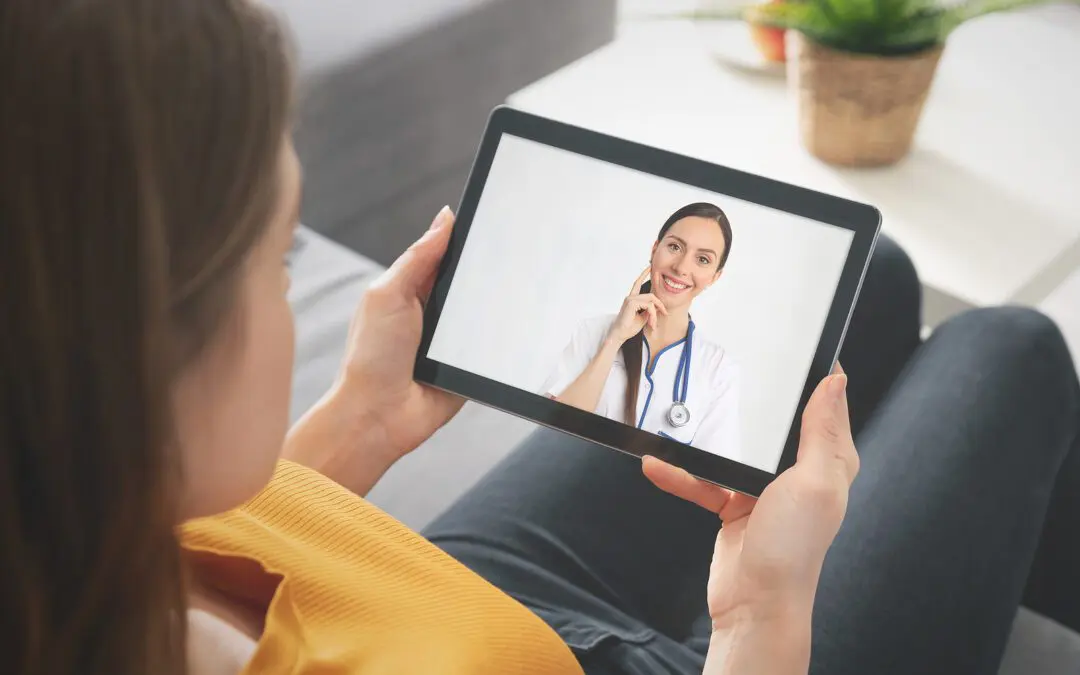If you’ve recently discovered you’re pregnant and are exploring your options, you may be considering the abortion pill through telehealth.
While telehealth offers convenience, it’s critical to understand the potential risks to protect your health. At Life Choice Pregnancy Center, we prioritize your safety and want to provide clear, factual information about the risks of obtaining the abortion pill through telehealth.
This guide explains what the abortion pill is, the importance of in-person care like ultrasounds, and the health risks associated with telehealth abortion services.
What is the Abortion Pill?
The abortion pill, also known as medication abortion, involves taking two medications—mifepristone and misoprostol—to end an early pregnancy.
Mifepristone stops the pregnancy’s progression, while misoprostol induces uterine contractions to expel pregnancy tissue. This process is typically approved for pregnancies up to 10 weeks gestation, per FDA guidelines.[1]
Abortion Pill Through Telehealth vs. Online Ordering
Obtaining the abortion pill through telehealth often overlaps with ordering it online, but the process varies by provider.
Some telehealth services include a virtual consultation via video or phone with a healthcare provider. Others may require minimal information, allowing you to order the medication directly online.[2] While this may seem quick and convenient, bypassing in-person care can pose significant health risks.
Why an Ultrasound is Essential Before Taking the Abortion Pill
An ultrasound is a critical step in the decision-making process. It ensures your safety by confirming two key factors: gestational age and pregnancy viability.
Verifying Gestational Age
Knowing how far along you are is essential for safe use of the abortion pill. The FDA approves mifepristone and misoprostol for pregnancies up to 10 weeks gestation.[3] Some online providers may claim the abortion pill through telehealth is safe up to 13 weeks, but this exceeds FDA recommendations, increasing health risks.
An ultrasound accurately measures gestational age by assessing the gestational sac or fetal size[4], unlike estimates based on your last menstrual period (LMP), which can be unreliable, especially for those with irregular periods.
Ensuring Pregnancy Viability
An ultrasound confirms whether the pregnancy is viable (developing normally with a detectable heartbeat) and located in the uterus. According to the American College of Obstetrics and Gynecology, in early pregnancy, a normally developing pregnancy would be deemed viable, whereas early pregnancy loss or miscarriage would not.[5]
Additionally, a pregnancy outside the uterus, known as an ectopic pregnancy, requires immediate medical intervention and cannot be safely treated with the abortion pill. Ectopic pregnancies produce a positive pregnancy test, just like intrauterine pregnancies, but taking the abortion pill through telehealth in this case can be dangerous and delay necessary treatment.
Risks of Relying Solely on Telehealth for the Abortion Pill
While telehealth is valuable for many healthcare needs, it has limitations for medication abortion. A telehealth visit typically involves only a phone or video call, meaning providers cannot perform an ultrasound to confirm gestational age or rule out ectopic pregnancy. Relying solely on telehealth for the abortion pill through telehealth increases the risk of:
- Taking the pill too late: Using the abortion pill beyond 10 weeks increases the likelihood of complications.
- Missing an ectopic pregnancy: Without an ultrasound, an ectopic pregnancy may go undetected, leading to serious health consequences.
- Inadequate medical oversight: Telehealth providers may not offer sufficient follow-up care or emergency support.
Health Risks of the Abortion Pill
A 2017–2023 study analyzing over 865,000 medication abortions found that 1 in 10 women experienced a serious adverse event after taking mifepristone.[6] Common serious complications include:
- Sepsis or infection
- Hemorrhage, requiring blood transfusion
- Hospitalization or ER visits related to the abortion
- Ectopic pregnancy complications
- Other life-threatening issues (e.g., cardiac, pulmonary, or thrombotic events)
Common but less severe side effects include cramping, heavy bleeding that can last up to 16 days, vomiting, fatigue or diarrhea, or mild-flu like symptoms.[7] These risks underscore the importance of medical supervision and pre-abortion ultrasounds.
How to Protect Your Health
Before choosing the abortion pill through telehealth, prioritize an in-person ultrasound to confirm gestational age and pregnancy viability. This step ensures you make an informed decision with accurate information about your pregnancy.
You can receive a free ultrasound in an easy, one hour appointment at Life Choice Pregnancy Center. We are dedicated to making your experience a positive one! If you have a support person, you are welcome to bring them with you to your appointment.
We accept walk-ins, but you can easily book an appointment online to ensure that our nurse is ready for you when you arrive.
Considering the Abortion Pill in Russellville, Kentucky? Get the Facts First at Life Choice Pregnancy Care Center.
Knowing what to do before choosing abortion can feel overwhelming, especially with so much information out there. At Life Choice Pregnancy Care Center, we simplify the process by offering clear, factual guidance about your pregnancy and options.
Give us a call at 270-717-5433 or schedule an appointment online today. All services are confidential and free of charge.
Please be aware that Life Choice Pregnancy Care Center does not provide or refer for abortion services.
Sources
- AAMC. (2024). What is medication abortion? Your questions answered. Association of American Medical Colleges. https://www.aamc.org/news/what-medication-abortion-your-questions-answered
- Planned Parenthood of Metropolitan Washington, DC. (n.d.). Medication abortion at home (telehealth). Planned Parenthood. https://www.plannedparenthood.org/planned-parenthood-metropolitan-washington-dc/patient-resources/abortion-dc/medication-abortion-home-telehealth
- U.S. Food and Drug Administration. (2025). Questions and answers on mifepristone for medical termination of pregnancy through ten weeks gestation. https://www.fda.gov/drugs/postmarket-drug-safety-information-patients-and-providers/questions-and-answers-mifepristone-medical-termination-pregnancy-through-ten-weeks-gestation
- Sabbagha, R. E., & Tamura, R. K. (n.d.). Assessment of gestational age by ultrasound. The Global Library of Women’s Medicine. https://www.glowm.com/section-view/heading/Assessment%20of%20Gestational%20Age%20by%20Ultrasound/item/206Glowm
- American College of Obstetricians and Gynecologists. (2024). Facts are important: Understanding and navigating viability. https://www.acog.org/advocacy/facts-are-important/understanding-and-navigating-viability:contentReference[oaicite:3]{index=3}
- Hall, J. B., & Anderson, R. T. (2025, April 28). The abortion pill harms women: Insurance data reveals one in ten patients experiences a serious adverse event. Ethics and Public Policy Center. https://eppc.org/publication/insurance-data-reveals-one-in-ten-patients-experiences-a-serious-adverse-event/
- Hall JB, Anderson RT. (2025, April 28). The abortion pill harms women: Insurance data reveals one in ten patients experiences a serious adverse event. Ethics & Public Policy Center. Published. https://eppc.org/publication/insurance-data-reveals-one-in-ten-patients-experiences-a-serious-adverse-event/

